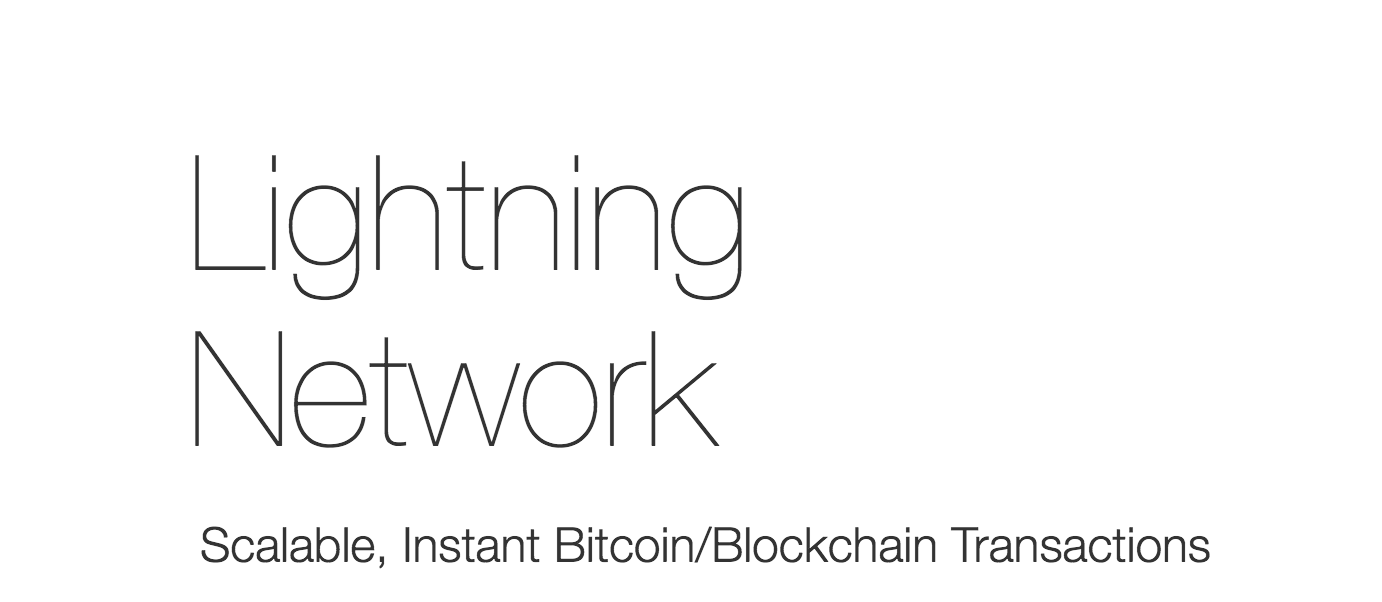A Primer to the Lightning Network (Part 1): Multisig Addresses as the Building Blocks of the Lightning Network
On August 8, Bitcoin reached its lock-in threshold for SegWit. This is great news because there are many exciting developments in the pipeline for Bitcoin such as the Lightning Network. This technology will also be available for other Segwit enabled cryptocurrencies including Litecoin, Vertcoin, and Digibyte.

What is the Lightning Network?
The Lightning Network will allow users to have thousands of transactions through a multisig address yet pay only 1 transaction fee to the miners. It will also allow for Atomic Swaps i.e. the ability to swap one cryptocurrency for another without going through an exchange. (ex: Bitcoin for Litecoin)
Now since the Lightning Network is a big topic to tackle, I will break it down into three articles: 1) Understanding Multisigs as the Building Blocks of the Lightning Network 2) The Lightning Network Between Two People 3) The Full Picture of the Lightning Network. Also, I will be using Litecoin (LTC) as my currency of choice throughout this three-part series.
1. What’s a Multisig Address?
A multisig address is short for a “multiple signature address.” This means that multiple people control this address. It is similar to your regular wallet in that it can receive and spend Litecoin (LTC). However, it is unique in that you can only spend LTC if certain conditions are met.
For example, let’s say 3 people decide to create a multisig address together. They can arrange it so that all 3 people have to sign the transaction in order to send the LTC. They can also arrange it so that only 2 out of the 3 people need to sign. They can even do 1 out of 3. This is all made possible through “smart contracts.”
Now let’s pretend we created a multisig wallet where 3 people own it and 3 people must sign the transaction. First, one person initiates a payment of 1 LTC from the address. This creates an open payment channel.
An Open Payment Channel means that a transaction has started but not completed. This will be a key concept in our second article, “The Lightning Network Between Two People.”
Creating an open payment channel does several things:
- It locks up the LTC.
- A payment of 1 LTC is proposed to the other wallet owners to sign off on.
- The payment is not yet recorded on the blockchain because it is not completed. The transaction will be completed only when all 3 people sign off on this transaction which will close the payment channel.
A Closed Payment Channel is when a started transaction is fully completed and signed off on. This results in three consequences:
- A payment of 1 LTC is sent.
- The transaction is recorded on the LTC blockchain.
- A fee is taken and given to miners who process the transaction.
Summary
The Lightning Network(LN) is comprised of many multisig address. These are the building blocks of the LN. It leverages the unique properties of Open and Closed Payment Channels to prevent transactions from being recorded on the blockchain and users from paying a transaction fee. Payment channels close when all parties sign the transaction.
Okay that’s it for now and thanks for reading! You are now ready for Part 2: The Lightning Network Between Two People.
Sources:
https://streams.lykke.com/Project/ProjectDetails/b134b15b54e745559f26c217bef5a2f8
Donation Addresses:
LTC: LRrekGu3D4ALFvVwWHNXxBMpphujHCnPkv
BTC: 1Mj6Jrz8WzgnQPP2KQrQXZ6AUWcLsTJukg
P.S. Follow me on twitter at ecurrencyhodler!